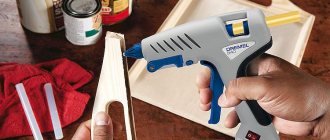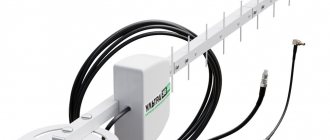How to convert car door switches to reed switches
Very often I had to change the door switches, some have them in the locks, some have them separately, but that’s not the point, I wanted to make it so that I could just set it and forget it. I decided to use reed switches, bought KEM-3 and also needed classic caps for 5 rubles, like these.
I put a heat shrink tube on this piston.
If the reed switch has three terminals (as in my case), then you need to bite off the one that has only one (we don’t need it), and leave the two terminals that are located next to each other.
Now we solder the wires.
Then I took the sealant, filled the piston itself with it and inserted the reed switch with the soldered wires there.
We wrap it with electrical tape, but I sealed the end itself with self-adhesive furniture plugs, heating them a little with a lighter, because they are made of vinyl.
I took the magnets out of an old Chinese belt case for a cell phone, there were exactly 4 of them. Then I took a drill, a 7 mm drill bit, decided on a place for the sensor and drilled it.
We lubricate the hole with sealant and insert our reed switch, and also coat the inside with sealant.
We connect the wires to the standard wires (it’s different for everyone, so there’s nothing special to write here)
We carry out the procedure on all doors
Here is the sealant inside the door
I glued the magnets for a second, they hold tightly)))
Tinted it to match the color.
I configured the reed switches with magnets in such a way that at the first click of the door it shows the open door.
Reed switches are designed for a current of 1 ampere, so they are suitable for this purpose. Operating temperature from -60 to +125*C, number of short circuits and openings 1,000,000.
It has been in use for two years now, and during this time there have been no complaints. So, maybe someone will decide to redo it for themselves. All the best.
How to distinguish on a single-phase motor
Single-phase motors are equipped with two types of winding so that their rotor can rotate, since only one is not enough for this. Therefore, before connecting the motor, you need to figure out which skein is the main one and which is the auxiliary one. There are several ways to do this.
By color coding
What type a particular skein is can be determined by color markings during a visual inspection of the engine. As a rule, red wires are of the working type, but blue wires are of the auxiliary type.
But all rules have their exceptions, so it is always necessary to pay attention to the electric motor tag, on which a decoding of all markings is applied.
However, if the engine has already been repaired or there is no tag on it, this method of checking is not effective. In the first case, during repair work, the internal contents of the motor could completely change, and in the second, there is no way to accurately decipher the color symbols. In addition, sometimes there may be no markings at all. Therefore, in such situations, it is better to resort to another, more reliable method.
By wire thickness
The thickness of the wires that come out of a low-power electric machine will help distinguish the starting coil from the working one. Since the auxiliary one works for a short time and does not experience serious load, the wires related to it will be thinner.
However, it is not always possible to determine the thickness of the wire cross-section with the naked eye; sometimes the difference between them is completely invisible to humans.
But even if it catches your eye, you shouldn’t rely on that alone. Therefore, many always measure the resistance of wires.
Using a multimeter
A multimeter is a special device that allows you to measure the resistance of wires, as well as their integrity. To do this, you must follow the following algorithm:
Once the measurements have been determined and it becomes clear which electrical wires belong to which coil, it is recommended to mark them in any convenient way. This will allow you to skip the resistance measurement procedure when connecting the motor in the future.
There are several ways to distinguish where the starting winding is and where the working winding is of a single-phase motor. However, the most effective of them is to measure the resistance of the electrical wires coming from a low-power electric motor using a multimeter.
Limit switches: types, device, principle of operation
Limit switches, or as they are also called, limit switches are used to connect an electrical circuit, for example, in electrical appliances and alarms. Also, these devices are used to monitor and control electrical equipment, which is systematically tested for mobility. The switch is mounted on the structure itself where it is necessary to control the movement of individual elements. To use a limit switch, you need to know what it is for, what types there are and how each individual version works. This is exactly what will be discussed next.
Operating principle and startup scheme
The stator windings generate magnetic fields using alternating current. They have the same amplitude and frequency, but act in different directions, so the static rotor begins to rotate.
If the motor does not have a starting mechanism, the rotor stops because the resulting torque is zero. In the case where the rotor begins to rotate in one direction, the corresponding torque becomes higher as the motor shaft continues to rotate in the given direction.
Switch design
This device contains the following components:
- panel;
- frame;
- contacts;
- head.
It is very important that the switch housing has good strength so that the device is stable and can withstand various mechanical influences on the housing. Manufacturers use aluminum-silicon alloy as the material, and some types of limit switches are made of durable plastic.
The design of the limit switches is discussed in detail in the video:
Photo gallery
The main limit switches are shown in the photo.
Lever mechanical switch
Push button switch
Proximity sensor
Roller switch
Varieties
It is important to know what types of limit switches there are, because without this knowledge it will be difficult to choose the right device. These switching devices are divided into several main types:
- Contactless. This device is triggered in the event of the approach of any metal or other object to which switching has been made in advance.
- Mechanical. They are triggered only by mechanical action on the wheel or lever. As a result, the contacts either close or open, thereby giving a control or warning signal.
- Magnetic. They are also called reed switches. Based on the name, you can understand that the device is triggered when a magnet approaches it at a certain distance.
Non-contact limit switches are more modern compared to mechanical ones. They work on a special transistor switch, which in the open position has a small resistance.
All contactless switches are divided into four groups:
- Inductive. The limit switch is activated when the sensor detects a metal object. At the moment metal is detected, the inductive reactance increases, due to this the current in the winding decreases, and thus the contacts in the circuit open. The range of these products is very large and varied, so you can easily choose the size you need.
- Capacitive, interact with the human body. When a person approaches the sensor, an electrical capacitance arises, thanks to which the multivibrator circuit installed inside the device is activated. The closer a person is, the lower the pulse frequency becomes, and the capacity becomes larger. The main function is performed by the plate, which is connected to the capacitor.
- Ultrasonic. Quartz sound emitting elements are used. When something appears within the range of the device, the amplitude of the sound signal changes, mostly this purity is inaudible to people.
- Optical switches have a special transistor and an infrared LED. When the LED beam is interrupted, the photocell closes.
The video below discusses some types of limit switches:
Instructions for assembling a touch switch with an infrared sensor
A more interesting sensor light switch circuit is represented by a simple design based on the HF1 sensor (SFH506-38). The device is triggered when infrared radiation reflected from a hand or other object from the HL1 LED hits the surface of the sensitive element. In this case, it is not necessary to touch it; it is enough to bring the reflective object or part of the body closer to the adjacent pair of elements from the emitter and receiver.
The control part of the circuit uses the K561TM2 microcircuit, which contains two D-flip-flops. The first, designated DDR1.1, is used as the basis of a multivibrator with an output pulse frequency of 35...40 kHz. Range adjustment is performed by selecting the characteristics of resistors R1 and R2. These signals, through the limiting current R3, are supplied to the infrared LED HL1. The radiation of which, when reflected, hits HF1, in turn, the current from the sensor, if triggered, charges capacitor C4 through R5.
This combination produces a pulse at input 3 of the DDR1.2 trigger, switching its logical state at output 2, which opens or closes through the amplifying transistor VT1 (KT940A) the thyristor VS1 (KU201L), which controls the supply of current to the HL1 lamp.
A kind of filter that reduces the chance of false operation of the circuit is represented by a combination of elements R6 and C3, which introduce a certain delay in the response of the switch when receiving a signal from the sensor.
Features of work
The limit switch has a certain operating principle, thanks to which it is started and driven. The switching device will operate the moment it connects to the restored limiter, at which point the power supply to the electrical equipment is stopped. It is very important that all elements of this device work reliably and correctly, carrying out all necessary commands. At the same time, everything must work flawlessly, regardless of the type, configuration of the device and the way it is connected. That is why the area of application of the limit switch is in places of particular danger.
At the moment of contact of the moving mechanism with the limit switch device, it gives a signal. This will indicate that there is a danger in the electrical circuit. This device is a sensor equipped with an automatic shutdown system.
Pros and cons of proximity switches
A contactless switch is an alternative and at the same time a special case of a touch switch. It works on infrared radiation and allows you to turn on the backlight with a wave of your hand, i.e. without contact. The design is based on 2 elements: an emitter and a receiver. The switch reacts when any object appears within 2-7 cm of it. Such models are used in places where an important condition is the absence of hand contact with surfaces and objects.
When choosing contactless switches, it is necessary to take into account the profile material to which the LED strip will be attached. If it is aluminum, then you should avoid options with the chip located at the bottom and the power switch at the top. Such a switch cannot be attached to the bottom surface of an aluminum profile. It is only suitable for plastic. In the case of aluminum, you need to choose switches with a flat and smooth bottom base.
Another disadvantage of proximity switches is their width. Usually it is a couple of millimeters larger than the LED strip itself. Other important features:
- To operate the switch, you need to cut a window in the diffuser.
- The mode automatically turns off the backlight when the voltage suddenly disappears, and turns on when it appears. This is not typical for all switches, but it is worth clarifying this nuance before purchasing.
Thus, contactless switches have one serious drawback - lightning-fast reaction, so it is important to choose the right installation location
Application area
It is also necessary to know where limit switches are used. Each type of execution has its own specific purpose and is used in different fields of activity. However, according to their use they are divided into:
- Functional. They are responsible for regularly turning off or on the lighting, or some other electrical device. For example, such a device is located in the refrigerator. When the door opens, the mechanism turns on the light, and when it closes, it turns it off; this is one of the options for using a limit switch.
- Protective. They are installed in order to protect both the mechanism and workers from improper actions. For example, a miner's elevator will not begin to descend until the doors are closed, allowing people to use the elevator safely.
To summarize, the use of this device depends on the design and capabilities of the mechanism. Often, consumers do not know that they often have to use this mechanism in life:
- in the automotive industry and in the automobile;
- in household appliances and everyday life;
- in furniture products;
- in factories and manufacturing plants to carry out various tasks.
Limit switches are very practical and necessary devices. But to connect such devices, it is better to seek help from specialists. As has already become clear, these devices greatly simplify the use of many household items. We hope that the article provided was useful and interesting for you!
Trunk limit switch
Standardly, a limit switch is installed in the trunk to activate the backlight in it; on cars with a standard alarm system, it also serves to control opening during active security. The limit switch can also be used by the standard central locking, blocking locking if the trunk is not slammed shut.
If we are talking about a cheap car with a minimum configuration, then you will have to connect the trunk limit switch yourself when installing the alarm. It’s easiest for owners of those cars where more expensive equipment includes a standard trunk alarm switch: as with doors, here it is enough to install the original part in the designated place. Otherwise, alas, you will have to drill a hole and install a universal one. Increasingly, the switch is not installed as a separate part in the trunk, but is built into the lock itself, as is the case with the doors.
Sometimes this leads to serious problems: for example, on the Renault Koleos, a failure of the trunk locking mechanism has become a “trademark disease”, and in the author’s practice, the “anti-record” is only a week after purchasing a new car. The lock, not locking, did not allow the built-in limit switch to operate, and this, as on other cars on similar platforms, blocked the locking of the central locking as a whole; due to the non-locking trunk, the owner could not lock the doors. In such cases, it was necessary to tightly block the trunk lock in a locked state until a new one arrived for a warranty replacement.
How to make a pass-through switch with your own hands?
If you have installed a lighting fixture in a long hallway and want it to turn off at both ends, you will need a special switch that switches the voltage supply from one pole to the other. The same principle can be used if you are going to power the lighting fixture at the entrance to the room and at the bed or near the desk.
Then you can turn off the general lighting while lying in bed or by turning on the desk lamp on your desk. The stumbling block to the implementation of this scheme is the relatively high cost of such an electrical device, and you will need two of them, so it is much more profitable to make a pass-through switch with your own hands.
Online calculation of motor capacitor capacity
Enter data for calculating capacitors - motor power and efficiency
There is a special formula that can be used to calculate the required capacity accurately, but you can easily get by with an online calculator or recommendations that are derived from many experiments:
The working capacitor is taken at the rate of 0.8 μF per 1 kW of engine power; The launcher is selected 2-3 times more.
Capacitors must be non-polar, that is, not electrolytic. The operating voltage of these capacitors must be at least 1.5 times higher than the network voltage, that is, for a 220 V network we take capacitors with an operating voltage of 350 V and higher. To make starting easier, look for a special capacitor in the starting circuit. They have the words Start or Starting in their markings.
Starting capacitors for motors
These capacitors can be selected using the method from smallest to largest. Having thus selected the average capacity, you can gradually add and monitor the operating mode of the engine so that it does not overheat and has enough power on the shaft. Also, the starting capacitor is selected by adding until it starts smoothly without delays.
During normal operation of three-phase asynchronous electric motors with capacitor start, connected to a single-phase network, it is assumed that the capacitance of the capacitor will change (decrease) with increasing shaft speed. At the moment of starting asynchronous motors (especially with a load on the shaft) in a 220 V network, an increased capacity of the phase-shifting capacitor is required.
Operating principle of a pass-through switch
Unlike the usual models of two- and one-key switches for turning on lighting, pass-through switches provide two on positions. To operate the circuit, two pass-through switches are used, with which you operate the lighting lamps.
A schematic diagram of the operation of such an electrical circuit is shown in the figure below:
Figure 1: operating principle of a pass-through switch
As you can see, in the diagram, the phase wire is connected from the electrical wiring to the switches, and the neutral wire is led directly to the lamp or other lighting equipment. If you trace the connection from the distribution box, the phase is supplied to the input of the first pass-through switch. Next, two independent wires connect the terminals A and B of the first device to the terminals of the same name of the second switch. From the output terminal of the second switch, the phase is supplied to the lamp output. The second terminal of the lamp is connected by the neutral wire.
Of course, the above connection diagram requires additional cable costs to connect the switches to each other, but its functionality more than justifies it. Due to its design features, such a switch does not break the circuit in any position, so it is more correct to call it a switch.
In everyday life, due to the use of such switches on staircase landings to disconnect flights from different points, they are also called marching switches.
If you decide to implement such a scheme at home or in the office, but do not want to overpay for a pass-through switch, it can also be made from a cheaper two-key device. Next, we will look at two techniques that will allow you to make a pass-through switch with your own hands.
Connection diagrams
There are a number of effective schemes for connecting photo relays to a lighting line. They depend on the power of the current collectors, the length of the line, the location and power of the photo relay.
Using a distribution box
In the first scheme, the phase conductor from the FR is connected to an unoccupied terminal of the distribution box, then, using a jumper, it is switched to the proper voltage supply line to the lighting lamp.
In the case where there is no distribution box in the single-line diagram, the photo relay is connected directly to phase and “0”. At the same time, there are several wiring diagrams when installing photo relays for street lighting:
- Only the “phase” is connected to the photosensor, and “0” is bypassed.
- Both zero and phase wires, which are used in the light switching circuit, are connected to the relay terminals.
Directly on a three-wire network
To implement this connection option, a three-wire circuit is used. The relay is supplied with 220 V with phase and “0” wire. A similar scheme is used for motion sensors (MS). Although there are also two-wire DD circuits without a “0” wire.
To correctly connect the conductors in phase and neutral, they are guided by the color design of the external insulating coating. As a rule, “0” is blue or green, brown (black) is the input phase from the power supply, and red is the load output. On it, phase voltage occurs when the photocell is triggered, which is why it is inserted into the lighting device.
Via switch
The circuit through a switch is performed if you need to install an additional one-key switch so that the user does not constantly run to the switchboard to turn on or off the lighting line.
4 cables are inserted into the junction box. Power is supplied through the circuit:
- Automatic machine in the switchboard;
- light switch;
- photo relay sensor;
- lamp.
Method number 1. Two-key switch
This method allows you to obtain pass-through switches from conventional two-key models. This is especially convenient if you don't want to spend time making complex changes to their design or don't have the appropriate tools.
Rice. 2. Two-key model of pass-through switch
To implement this model of a pass-through switch, you will need two two-key devices, connecting wires and a lighting source.
Once you have collected everything you need, follow these steps:
- Turn off the voltage on the panel using a circuit breaker - this will prevent electric shock during installation work. It will be more reliable if you simultaneously disconnect both the neutral and phase conductors for the corresponding lamp.
- Connect the first of the two-gang switches to the phase wire of the three-core cable. To do this, release the terminal on the switch and insert the core there. The core is clamped until reliable contact is obtained with minimal resistance to electric current.
- Also connect a wire to each of the output contacts. Next, lead them to the output contacts of the second two-key switch.
- From the input terminal of the second switch, take the wire to the lighting device.
If the lighting system is carried out as part of a major overhaul and replacement of all lamps and appliances in the house, then the walls are tapped for power distribution. Otherwise, you can get by with external installation in the cable channel. In case of a long distance between switching points, it is better to carry out wiring with a three-core cable. Since three wires are optimally used for intermediate connection of wires.
It should be noted that the above method works by simultaneously switching two keys at once, so each time you need to operate two buttons at once, moving them to opposite positions.
Otherwise, the logic of the circuit will be broken and next time you simply will not be able to turn off the light bulb. Therefore, if other household members may be negligent about such switches, it is better to redesign the device to a single-key version.
Installation and connection - step-by-step instructions
Connecting mechanical type limit switches is not difficult and is no different from the installation method of a standard device. A phase break connection is made to contacts of the required type (normally closed or open). The difficulty lies in the installation and adjustment of the HF, which requires correct location on the supporting structure.
It is necessary to install the device body so that the roller is in contact with a given element of the moving part, but does not protrude too far forward, risking breaking. If the moving structure is large in size and weight, it can vibrate during movement, which must be taken into account when adjusting the position of the roller.
For such structures, it is more correct to use switch models with an adjustable lever to adjust the position of the roller in place. Let's consider the procedure for installing HF on sliding gates. To work you will need:
- Welding machine.
- Screwdriver, set of wrenches.
- Pliers.
- Bulgarian.
- Roulette, ruler.
- Point probe for identifying phase wires.
Step-by-step instruction:
Step 1. Mark the extreme positions of the leaf when the gate is closed and open. Weld metal platforms on the supports (guides) for installing the HF. At the same time, it is recommended to secure the metal pipe into which the wire will be placed.
We install a place for limit switches
Step 2. Place the sash in its extreme position and mark the centers of the holes for the bolts on the support platform. Perform the same steps on the second site. Drill holes and secure switches.
We fasten the mechanism itself
Step 3. Unscrew the caps and connect the wires, previously tightened into the pipe with wire. Connect the wires to the control panel and check operation. Adjust the position of the switches and, if necessary, install additional stops to ensure reliable interaction of the rollers with the moving sashes.
Connect and check functionalityMethod number 2. Single key switch
If you undertake to convert a two-key switch into a single-key switch with a structural change in the position of the terminals, it is advisable to use two switches of the same type or at least similar in design and size. Be sure to pay attention to whether the design allows you to rotate the movable contact group of the switch so that in the first position they close one contact, and in the second the opposite one.
The procedure for manufacturing a pass-through switch with one key is as follows:
- Before carrying out installation work, be sure to turn off the power supply to the relevant section of the circuit. If you turn off only one circuit breaker, be sure to check the absence of voltage with an indicator.
- If you are going to remove the live breaker from the box, first remove the bezel and remove the clips. Then loosen the fastening points in the box and remove the core. Unscrew the connection wires and remove the switch from the lighting circuit.
- If you are using a new switch, you can skip the previous step. Then proceed immediately to dismantling the electrical contacts from the polymer or ceramic base.
- Using a screwdriver, disassemble the device, separate the metal plates - changeover contacts.
Rice. 3. Disassemble the switch
Depending on the design of the switch, you will need to unscrew the bolts, pull the springs out of the frame, or disengage the lock.
- Fixed contacts are located on a ceramic or polymer base. Some of them will need to be rotated 180° so that when the key is switched, the second contact closes.
Rice. 4: Expand one of the contacts
But such manipulation is not possible on all switches; in some variations, you will have to modify the contacts - solder an additional bus to lengthen the lamellas. Therefore, each model needs to be understood in detail.
- Install a jumper at the phase wire input to equalize the potential at both terminals.
Rice. 5: install jumper
- Repeat the same procedure with the second switch to create two pass-through switches. Assemble all the elements in the reverse order, but instead of two keys, install one that, due to its dimensions, can move freely on the existing mount.
- Place both switches in the boxes underneath them. From the output terminals of one, connect the wires to similar contacts of the other. Pairs of contacts must be connected by separate wires.
Before commissioning, it is advisable to check the quality of the closure when switching. To do this, test the circuit on both pairs of contacts - you should get almost zero resistance in both options.
Otherwise, the key of one of the pass-through switches does not fit tightly in a certain position, accordingly, the switch will need to be sorted out and the problem fixed. If you plan to lay wiring, it is important to use a three-core wire; it will be much more convenient to work with.
How to connect a contactor
Features of connecting LED strips
When connecting a contactor, you immediately need to decide on the mechanism that it will turn on. This could be a motor, pump, fan, heating elements, compressors, etc. The main feature of a contactor that distinguishes it from a machine is the absence of any protection. Therefore, when thinking through the circuits for switching on electrical equipment through a contactor, it is necessary to take into account the current-limiting and heating elements. To limit and shut down equipment in case of short circuits and loads many times higher than the rated load, fuses and circuit breakers are used. Thermal relays are used to prevent long-term slightly exceeding the rated currents of operating equipment.
In order to correctly connect a contactor to a circuit, you need to clearly understand which of the contacts are power and which of them are auxiliary, that is, block contacts. You also need to look at the ratings of the switching coil. The voltage, its type and magnitude, as well as the currents that flow through it for normal operation must be indicated there. During operation, power contacts may burn, so they must be inspected and cleaned regularly.
How to connect a modular contactor
A modular contactor is a type of conventional switching devices of the same type, only they are mainly used for switching switchboards on and off remotely. That is, turning it on, power is supplied to a group of machines, each of which is responsible for its own specific circuit. It is installed on a DIN rail. Can switch both direct and alternating current circuits.
Connecting a contactor via a button
To connect the contactor via a button, you need to study the attached diagram below. It is designed to start a load, in this case a motor, from a contactor whose coil is designed for 220 Volts alternating voltage. Depending on the voltage, it is worth considering its power supply. Therefore, when purchasing and selecting a contactor, it is worth taking this nuance into account. Since if the electromagnet is designed for constant voltage, then such a source will be needed.
When you press the start button, the contactor electromagnet coil will receive power and it will turn on. The power contacts will close, thereby supplying voltage to the asynchronous motor. The block contact of contactor K1, which is connected in parallel to the stop button, will also close. It is called by electricians a self-retaining contact, since it is this that supplies power to the switching coil after the start button is released. When you press the stop button, the power from the electromagnet is turned off, the power elements of the contactor break the circuit and the engine turns off.
Connecting a contactor with a thermal relay
The thermal relay is designed to prevent prolonged minor current overloads during operation of electrical equipment, because overheating negatively affects the condition of the insulation. Frequent excesses of temperature and current will lead to its destruction, and therefore to a short circuit and failure of an expensive actuator.
When the current in the stator circuit of the electric motor increases, the elements of the thermal relay KK will heat up. When the set temperature, which can be adjusted, is reached, the thermal relay will operate and its contacts will break the circuit of the electromagnet coil of the KM contactor.
For safety reasons, you must remember that work in the contactor circuit must be carried out when it is completely de-energized. In this case, the power supply must be locked with a key or prohibiting sign from unauthorized or erroneous activation. And also you cannot turn on this device with the arc chutes removed, this will lead to a short circuit.











